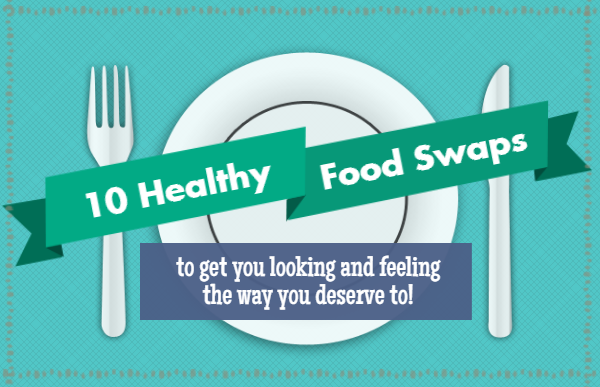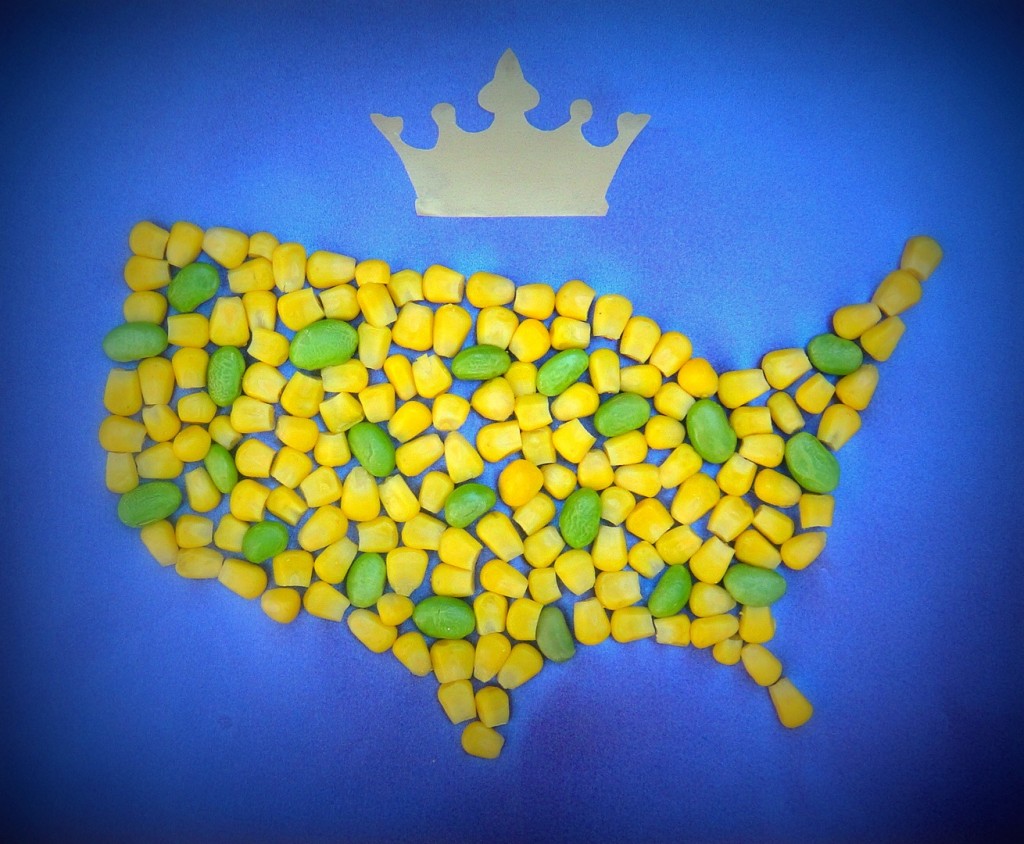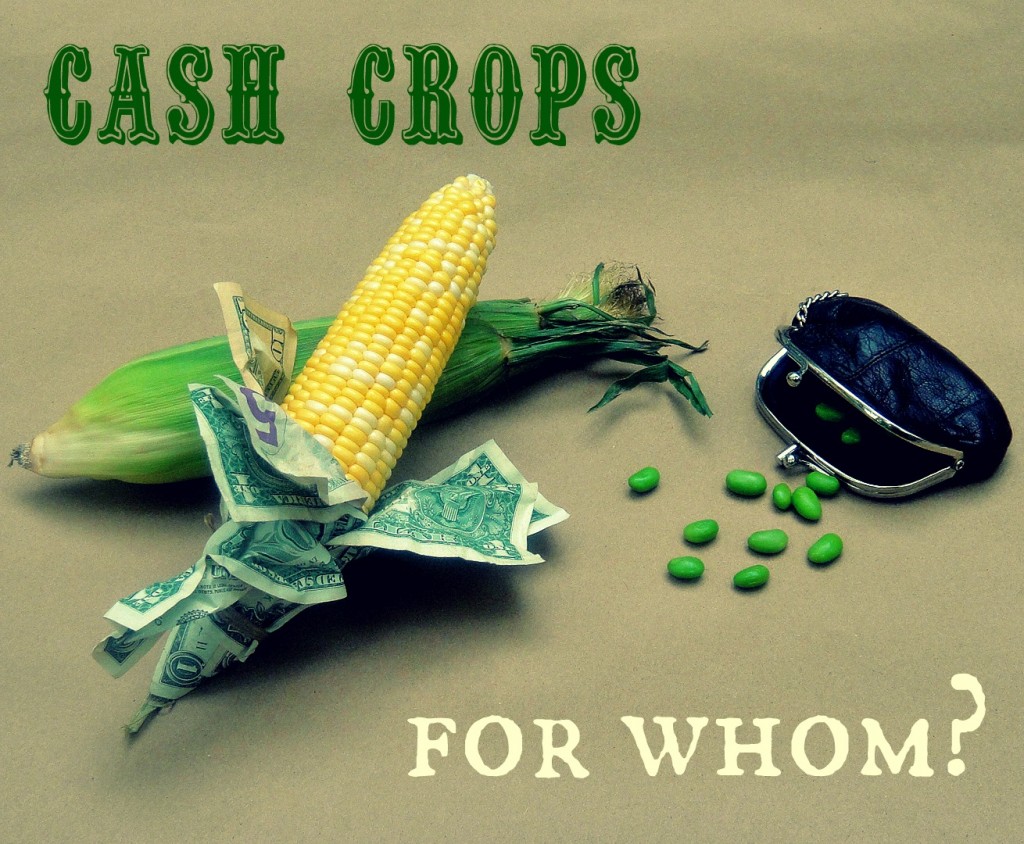corn and soy: America’s royal couple
Most of us know that eating a variety of foods is an important part of maintaining a healthy, well rounded diet. This concept is even recommended on the health.gov website, finding itself on the top of the list for America’s Dietary Guidelines. As they state, and we all know, no single food can supply all the nutrients we need to be healthy. In the melting pot that is America, we are eating diets very diverse from one another, yet we are collectively subsisting in large part off of two overlapping staples: corn and soy.
You may not think that you eat a lot of either of the two, as they are virtually unrecognizable by the time they reach your lips. Maybe you don’t make it a habit to keep your fridge stocked with corn cobs or tofu blocks, but because of the infiltration of these crops in our food system, the majority of us consume a hefty portion of both every single day.
Corn and soy make up over half of the crops grown in our country, and accordingly, they are the source of about half of our daily recommended calorie consumption. According to food writer Michael Pollan, corn accounts for about 554 calories per day while soy makes up another 257. When CNN’s Dr. Sanjay Gupta had a strand of his own hair tested, the results showed that 69% of the carbon in his body came from corn, a typical result for most Americans.
Farm Subsidies
So how did these seemingly mundane crops find themselves situated on the throne of America’s industrial food empire? In the 1930’s, when farmers represented a fairly large chunk of the population, FDR introduced farm subsidies to ensure that these families could stay afloat during the depression, while providing affordable provisions for the rest of the country. Fast forward to today, where farm families make up just 1% of the population, and just five crops receive 90% of the 25 billion dollars spent per year on subsidies (kale doesn’t make it on this list, in case you were wondering).
While it might seem like an ideal situation for farmers, who receive the base price for every bushel they sell plus the subsidy amount, the system actually results in a catch 22. As growers are motivated towards overproduction, prices continue to fall and they are forced to grow even more, feeding the cycle and leaving our country with a mountain of corn and soy to ingest. Luckily (?), food manufacturers and the industrial food system at large have become very creative when it comes to reinventing new ways to transform those little nuggets into dollar bills.
When life hands you corn and soybeans….
When it comes to processed foods, corn and soybeans are the bricks and mortar of the stuff. Both of them happen to be extremely efficient at being broken down into their most basic parts, and then reassembled into an endless array of marketable commodities (to call the finished products food is asking a little too much, I think). While flavoring agents, chemical dyes, texture enhancers, and well recognized packaging are effective disguises, the truth is that it would be difficult to locate a processed food that doesn’t contain one, or both of the shape-shifters as a main ingredient (main ingredients, more accurately).
The foreign language of food labels
If you’re looking for them on the ingredient list, you’d first have to become fluent in the language of corn-and-soy-derivatives. Without including the more obvious ones (corn starch, soybean oil..) the list includes, but is not limited to: (feel free to gloss over here)
White vinegar, xanthan gum, citric acid, vanilla extract, MSG, cellulose, food starch, modified food starch, methylcellulose, mono- and diglycerides, fructose, dextrose, glucose, dextrin, maltodextrin (unless ingredient list clearly states honey, cane/beet sugar, or natural fruit juice the sugar is derived from corn) hydrolized protein, mono and di glycerides, hydrolyzed plant protein, gum arabic, guar gum, lecithin, mixed tocopherols, natural flavoring, stabilizer, thickener, emulsifiers,vegetable gum, starch, shortening, vitamin E, vitamin C. (1,2)
Phew! And that’s just scratching the processed surface, really.
Maybe you’re not in the majority group of Americans, and you don’t consume processed foods on a regular basis. You’d still be consuming a great deal of corn and soy (unless you meticulously source all of your dietary components). That is because with all that extra corn and soy laying around, we’ve figured out how to feed it to animals whose bodies it was never designed for in the first place. We’ve effectively replaced the natural diet of every animal we raise for food with our endless stockpile. And as we should all be familiar with the mechanisms of a food chain, nutrients travel north, leaving our plates composed in great part by corn and soy, even if you’re just having a ham and cheese sandwich.
“Of the 37 ingredients in chicken nuggets, something like 30 are made, directly or indirectly, from corn.” Michael Pollan
Reducing our nation’s greater sustenance to two food items obviously isn’t nutritionally ideal, (especially in regards to our bodies’ fatty acid ratio) but the worst part of the story is that 90% of both corn and soybeans grown on US soil have been genetically modified. This makes trying to avoid “Franken-food” even more of a challenge, as 80% of the processed food sold in the US now contains GMO ingredients.
Processed food will continue to be cheap as long as the mechanisms to subsidize their building blocks remain in play. And while an enormous profit is made from selling these foods (a four dollar box of cereal contains about four cents worth of corn), very little of that money is ever seen by the farmers who actually grew it. It instead goes to large commercial farms and multi-national corporations like General Mills and Coca-Cola, who capitalize off of our nation’s subsidy programs. The magicians who take a farmer’s raw product and transform it into something with a cartoon mascot and tag line are the one’s who’ve really mastered the intricacies of our food system.
other sources
Michael Pollan, The Omnivore’s Dilemma




Hi Allyson,
Great information that not many of us ever think about – the previous food chain of the food we eat, especially if it is processed food! Dr. Robert Lustig addresses this also in his Fat Chance Cookbook (on my wish list for books to buy this year). He was on the Peoples’ Pharmacy this weekend talking about this! Go to the archives on NPR and check it out. As a school teacher it is more than distressing to me to see what central office “nutritionists” plan for our young children to eat and what is on our breakfast and lunch lines. You nailed it: food with mostly corn and corn related ingredients. No wonder we are at an epidemic of poor health and obesity with elementary age children! But hey hey – it is cheap! By the way, we made a “fruity loopy’ cereal string to hang outside our classroom window in November to feed the birds. It still looks the same and no birds, creatures or otherwise has taken a bite 6 months later!
those birds know better than to eat that junk!